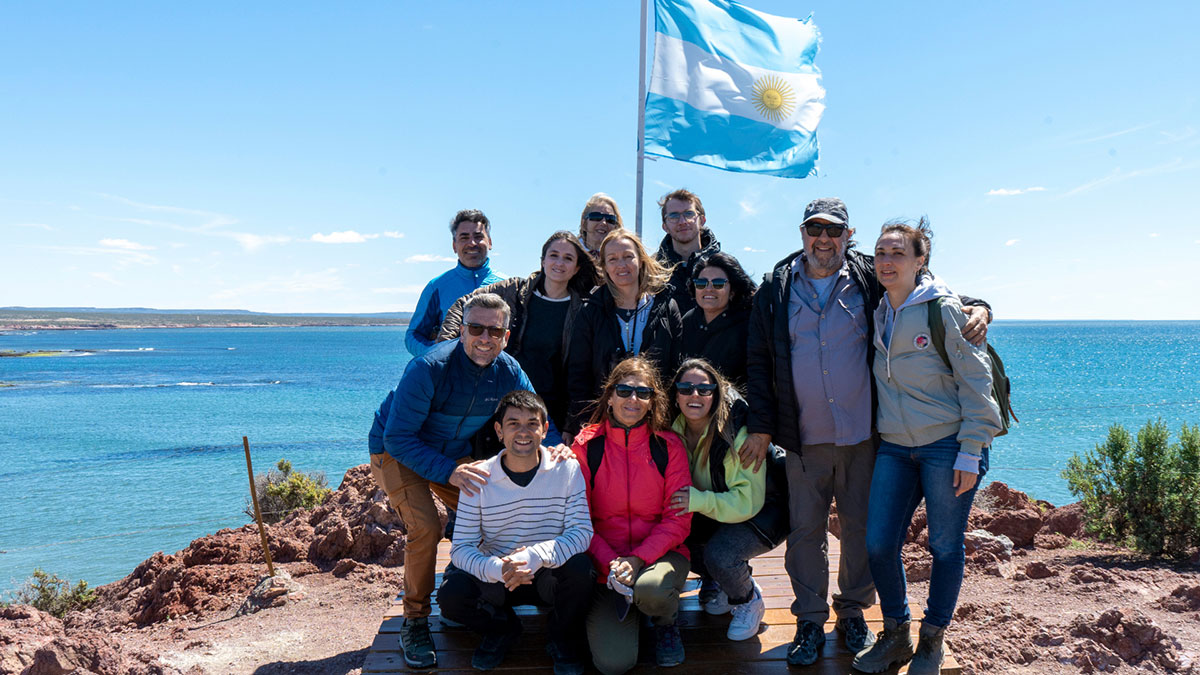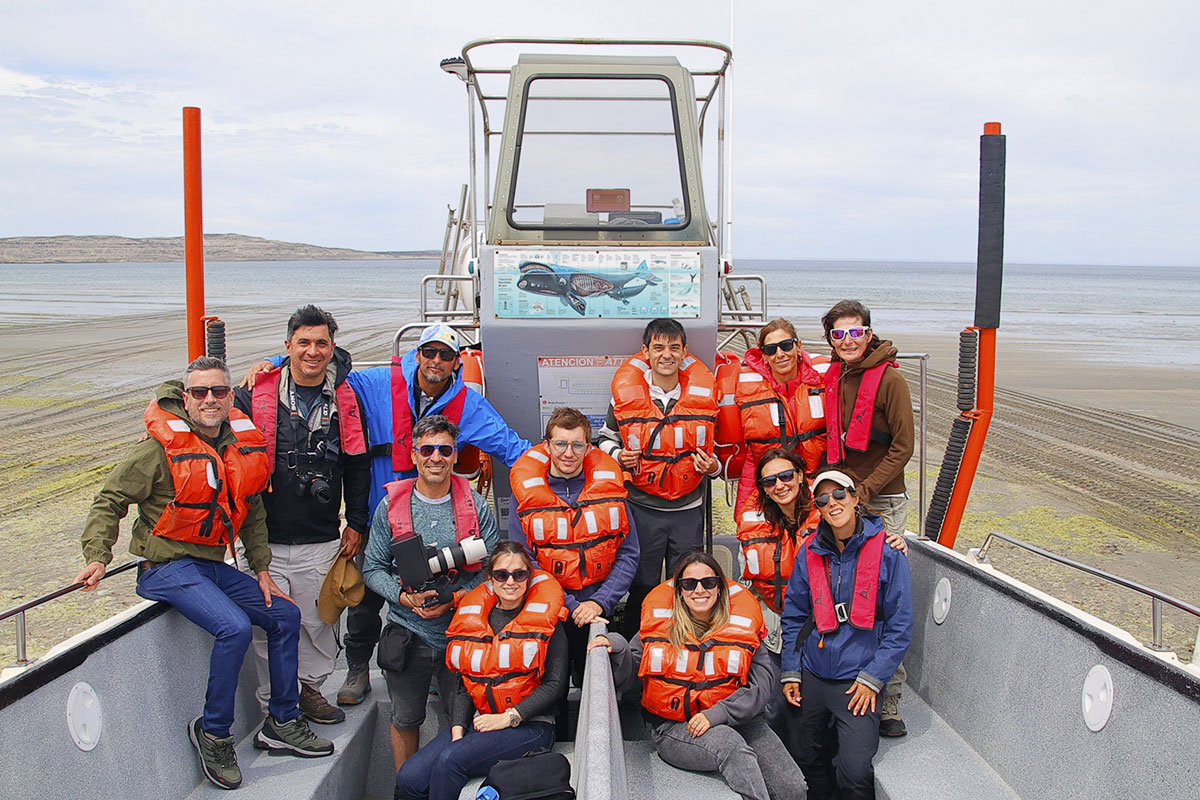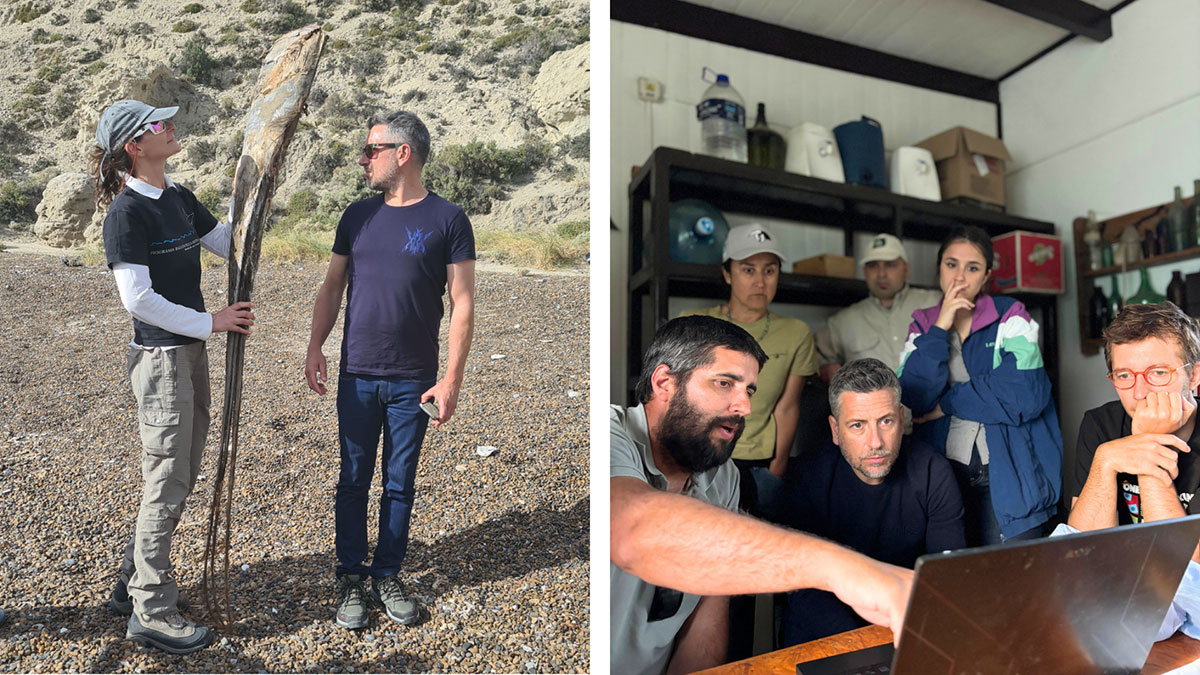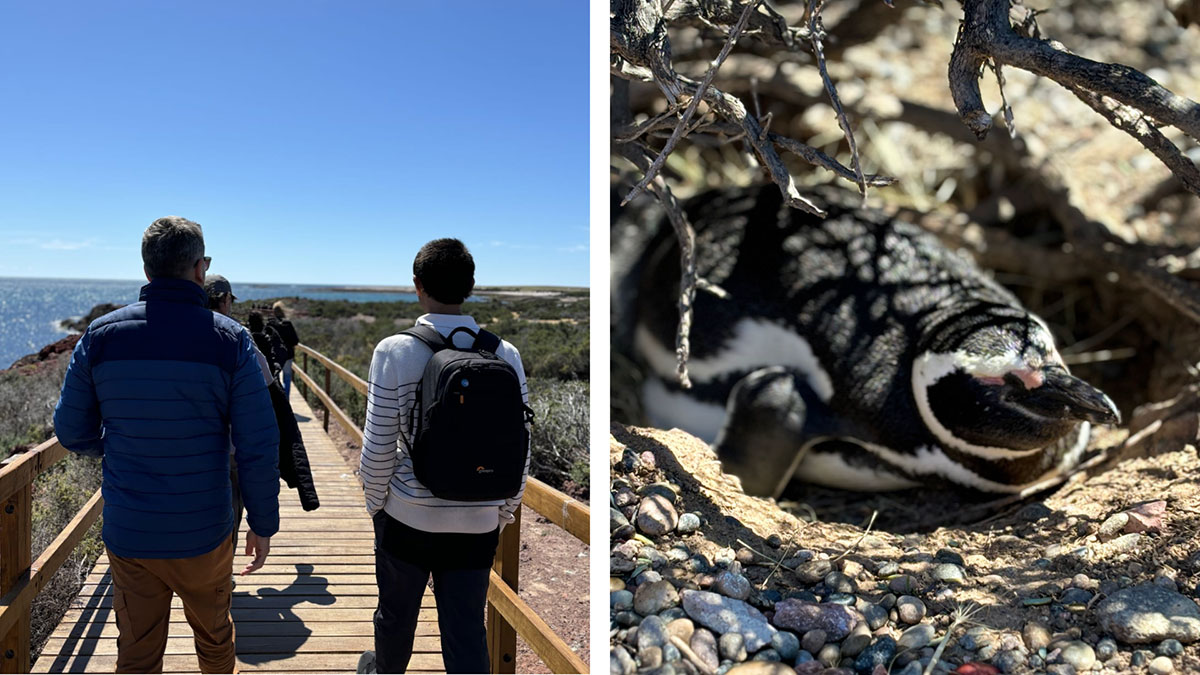The initiative highlights the need to strengthen journalistic commitment in the dissemination of key issues for the integrity of marine ecosystems. It was organized by the Forum for the Conservation of the Patagonian Sea, the Fundación Patagonia Natural and the Embassy of Ireland, within the framework of the MaRes Project with the support of the European Union.

Marine and coastal protected areas (MCPAs) are key tools for conservation and provide effective solutions in a present marked by climate change and environmental degradation. However, the lack of awareness of their importance and the limited understanding of the challenges faced by these areas makes it difficult for society to play a more proactive role in their care.
In this context, and recognizing the essential role of the media in shaping public opinion, the Press Trip “Discovering Marine Resilience in Argentina: A Journey to Marine Protected Areas” sought to address this scenario through the participation of journalists. Through visits to sites of ecological importance and accompanied by specialists from the organizations that make up the Forum on issues such as biodiversity monitoring, plastic pollution and bycatch, a group of five journalists were able to immerse themselves in the challenges and opportunities for marine conservation in the Patagonian sea.
The trip took place between October 31 and November 3, with the participation of media references like: Mariano García (Telefe Noticias); Jason Mayne (Trece TV and Todo Noticias); Agustina López and Juan Chavez (Todo Noticias) and Mauricio Federovisky, (Ambiente y Medio, América TV).
During the trip, the guests embarked in the waters of Golfo Nuevo and went on a marine fauna watching tour; they visited the “San Pablo Valdés” Wildlife Reserve, in Península Valdés, and the emblematic Natural Protected Area “Punta Tombo”, in the Department of Florentino Ameghino. Finally, they toured the Ecocenter of Puerto Madryn.
The initiative was organized by the Forum for the Conservation of the Patagonian Sea together with the Fundación Patagonia Natural and the Irish Embassy, within the framework of the MaRes Project, with the support of the European Union.
Knowing to Protect Marine Protected Areas
From Puerto Pirámides, the iconic urban center of the Península Valdés, a Protected Area and declared a Biosphere Reserve within the framework of UNESCO’s MaB (Man and Biosphere) Programme, the group went on a wildlife watching tour. During the tour, colonies of sea lions, groups of dusky dolphins and the iconic Southern Right Whales, which came within a few meters of the boat, could be observed.

Paula Faiferman, from the Instituto de Conservación de Ballenas (Whale Conservation Institute – ICB), accompanied this activity as she presented the work carried out by the ICB research team, including how photo identification and long-term monitoring make it possible to learn the unique life histories of whales, obtain key information about their population health and detect threats.
At the end of the whale watching tour, they visited the photographic exhibition “Guardians of the Oceans” focused on the Southern Right Whale and made by photographers and researchers of the ICB, and participated in a “sound whale watching” in Punta Ballena.
This is how Mariano García shared his experience in social media platforms.
Technology at the service of the fight against plastic pollution of fishing origin in the Patagonian coasts.
Accompanied by Alejandro “Manolo” Arias and Julia Guzmán, specialists in coastal-marine landscape of Fundación Vida Silvestre, the group went to the “San Pablo Valdés” Wildlife Reserve, a private protected area of 7,360 ha, created in 2005 with the aim of conserving representative samples of terrestrial and coastal ecosystems of Patagonia.

Despite its remarkable scenic attractiveness and abundance of native flora and fauna, its beaches face a serious problem of contamination by plastics of fishing origin. Aware of this situation, the MaRes Project team has selected this site as a key site for its operations, carrying out coastal cleanups, aerial and drone surveys and monitoring.
With the technical guidance of Lucas Bandieri, from CONICET – CENPAT, the journalists participated in an activity on the coast of Playa Cormoranes, which had the purpose of familiarizing the participants with the protocols and technology applied, introducing them to the pollution reduction strategies.
On the use of drones to survey plastic waste on the coasts, Jason Mayne expressed himself in social media platforms.
Punta Tombo, refuge of Magellanic Penguin colonies
During the second day of the trip, accompanied by José María Musmeci, president of Fundación Patagonia Natural, we visited the Punta Tombo Natural Reserve, an area covering 210 hectares of Patagonian Steppe. The ecological importance of this site as a refuge for the most diverse seabird colonies in Argentina and the largest continental colony of the Magellanic Penguin, with almost half a million individuals, was demonstrated.
In addition, details of the Penguin Slaughter case, which is expected to establish jurisprudence on issues of animal mistreatment and environmental damage, were discussed.

Ecocenter where science, art and communication meet
Towards the end of the trip, and together with Veronica Garcia, specialist in Sustainable Fisheries at Fundación Vida Silvestre, Julieta Campagna, specialist in biodiversity monitoring at WCS Argentina, and Ingrid Lucero, Communications Coordinator at CENPAT – CONICET, the group visited the Pampa Azul Ecocenter in Puerto Madryn, a cultural and coastal-marine interpretation center that promotes oceanic culture.
There, Julieta Campagna shared her experience on species monitoring, focusing on elephant seal colonies and the impact of avian flu. Veronica García presented the efforts to promote good practices on board to reduce seabird bycatch. And Ingrid Lucero, shared her experience on how to communicate science to the public and the challenges of putting marine conservation issues on the media agenda.
A trip to know and understand
The trip was a high impact and learning experience, both for the journalists and for all those who participated in the experience. By learning first-hand about the beauty and fragility of these ecosystems, and having a direct dialogue with the specialists, the journalists were able to gain a detailed overview of the main challenges facing marine conservation, as well as the existing prevention and mitigation strategies. The representatives of the organizations were also able to gain a better understanding of how media professionals work.
This initiative and its results reinforce the idea that the link between science and communication is a powerful tool to improve public knowledge and environmental awareness.